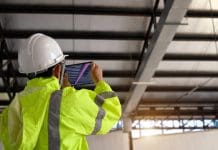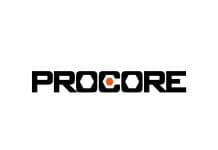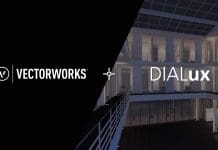Facility managers must embrace agile new strategies and technologies to accommodate shift to hybrid work, writes Jonathan Weindel, head of data analytics at Envoy
In a dynamic era marked by technological advancements and changing workforce preferences, traditional office structures are witnessing a profound transformation.
The rise of remote work and flexible arrangements has reshaped the way employees interact with physical workspaces. This shift calls for a nuanced understanding of evolving workplace dynamics, necessitating innovative strategies for facility management.
The rise of hybrid work
The remote-only conditions that dominated during Covid-19 are giving way to a hybrid model where employees split time between working onsite and working at home.
According to a recent Resume Builder survey, 90% of companies said they would be rolling out return-to-office mandates by the end of 2024.
The rise of hybrid work has been a hot topic among both employees and employers. Workers enjoy fewer commutes and the added flexibility. However, some employers worry that hybrid work hurts productivity and collaboration.
But those fears are unfounded: A 2023 Gallup survey found that spending two to three days in the office during a typical week tends to lead to the highest levels of employee engagement and tends to reduce burnout and intentions to leave the organisation. The same survey found that over half of employees with remote-capable jobs want to go hybrid.
Facility managers must adapt to make hybrid work a success
Hybrid work presents opportunities for facility managers, but it also introduces challenges. While hybrid work offers flexibility and autonomy to employees, it also creates complexities in space utilisation and communication.
Facility managers must navigate the intricacies of hybrid work models, balancing the need for physical collaboration spaces with the efficiency of remote work setups.
Furthermore, ensuring equitable access to resources and amenities for both onsite and remote workers adds another layer of complexity to facility management.
The transition to hybrid work models has far-reaching implications for facility managers, requiring adaptability and foresight to address emerging challenges.
From adopting new office philosophies to implementing new workplace management technologies, facility managers play a crucial role in shaping the future of workspaces. Failure to proactively address these implications may result in inefficiencies, decreased productivity, and disengagement among employees.
Rethink your office space
Space management is an essential part of this equation. Facility managers must rethink office layouts as workers return in hybrid arrangements.
Companies must make the most of their workspace to deliver an enjoyable experience for employees. No one likes returning to an office with unnecessary desks everywhere, big gaps of unused space or lifeless interior planning.
Facility managers that create more purposeful spaces throughout their office will ensure that employees have a better, more productive experience when they are onsite.
This includes spaces like quiet pods, phone booths, and individual desks for people to get in the zone. It also includes spaces like collaboration areas, social spaces and meeting rooms for people who want to chat and share ideas.
The more your workplace can accommodate different employees’ needs, the better. Facility managers should assess the function of each space in their office, determine if it is providing for the needs of employees, then work to improve or add to each space accordingly.
Communicate, communicate, communicate
Clear communication is just as critical for maintaining successful hybrid work environments as it was for fully remote work.
When a new onsite work policy is rolled out, these decisions will affect everyone in the company. Facility managers must keep their workers in the loop and be proactive in soliciting input when rolling out hybrid work or altering hybrid work policies in any way.
Overall, facility managers must establish clear lines of communication and set rock solid expectations with their employees. Workers must understand policies like:
- When are employees are expected to be onsite.
- When there is wiggle room for being in office, such as holidays or during periods of heavy schedules.
- Which sort of workflows employees should prioritise onsite (ie, team meetings) versus which processes should they shift to work from home days.
- Whether some workers will be expected onsite more often than others (such as junior employees).
Organisations need the right technology to optimise hybrid work environments
Technology is essential to improving space management and communication in this dynamic era of work. Facility managers should consider a platform that offers the following four software technologies:
- Desk/room booking technology: Facility managers can adopt hot-desking and room-booking software to allow their employees to book spaces through a mobile app. Employees can book a desk for heads-down work or larger meeting spaces for collaborative work.
- Office wayfinding: Office wayfinding software uses a map of an office or worksite so employees can search for coworkers, available desks, meeting rooms, and more.
- Workplace scheduling tech: This tech makes it easy for workers to schedule with their teammates to ensure they are able to connect while in the office. With workplace scheduling software, they can easily see who is coming in and when, as well as invite coworkers to join one another for collaboration and onsite meetings.
- Workplace analytics software: This software provides insights into foot traffic and space utilisation, so facility managers can continue to design a workplace that supports better work.
Getting hybrid work right benefits businesses and employees
In navigating the complexities of hybrid work environments, facility managers must adopt a strategic and proactive approach. A key element of this is leveraging data to optimise space utilisation.
Facility managers can work with workplace leaders to review analytics on a regular basis, ensuring they’re capturing data on factors like space utilisation and employee attendance. This data can then be used to inform real-world decisions.
For instance, analysing low-occupancy areas might prompt a redesign to create more collaboration spaces, while high-traffic zones could be optimised for smoother workflows.
By prioritising space management, communication and utilising data-driven insights, facility managers can empower organisations to thrive in this new era of work and create flexible, inclusive workspaces that cater to the diverse needs of modern employees.
By embracing agile workplace strategies and technologies, organisations can unlock numerous benefits, including enhanced productivity, greater employee satisfaction and improved resource optimisation.
These workspaces enable organisations to adapt to changing business needs swiftly, fostering innovation and resilience in the face of uncertainty.














